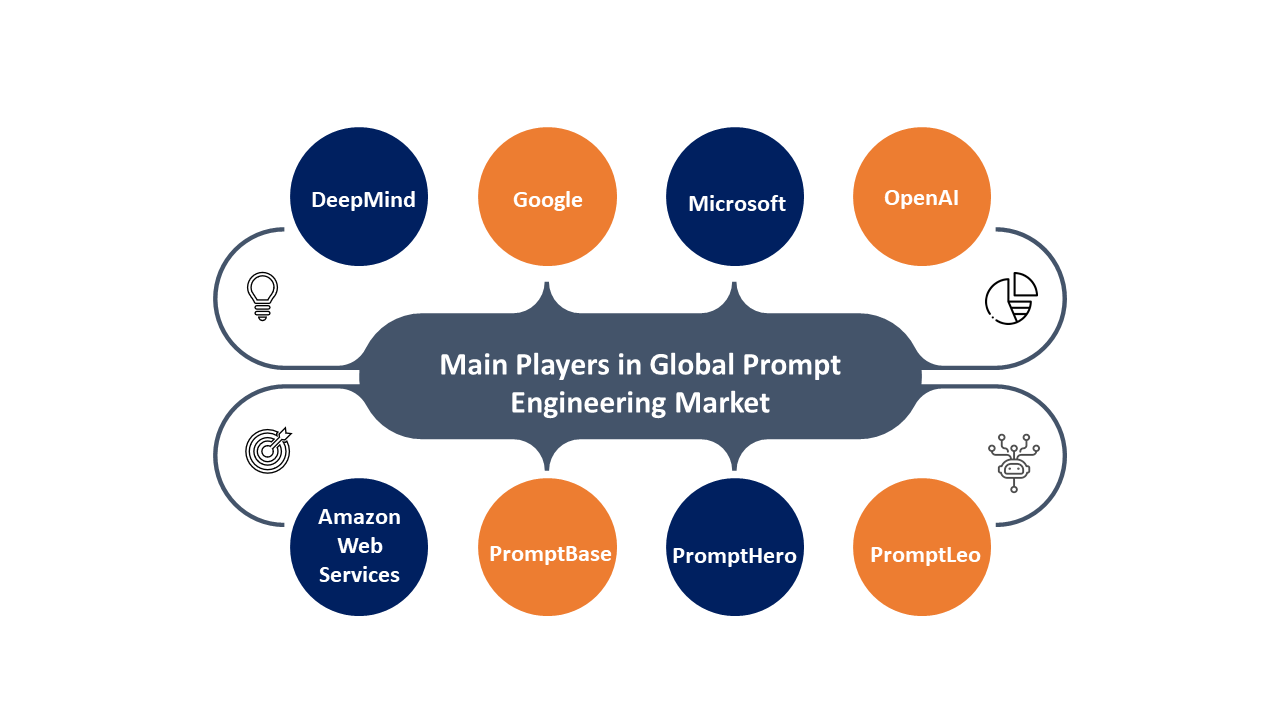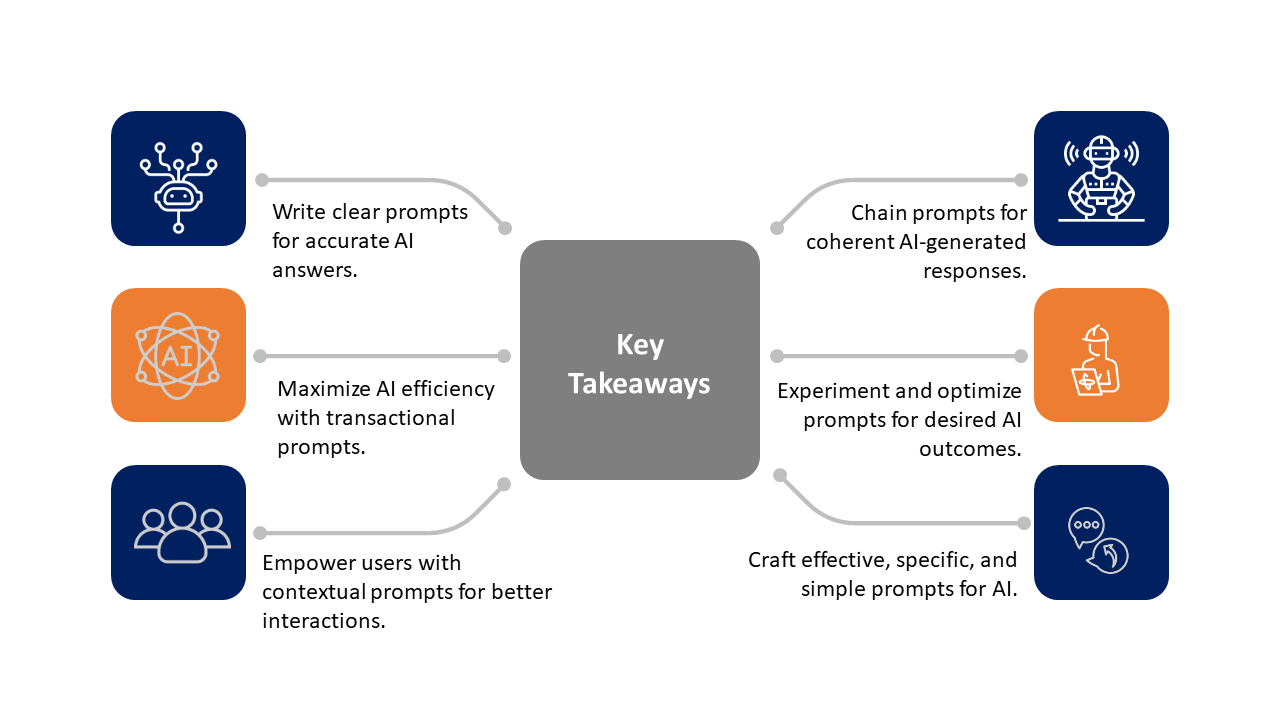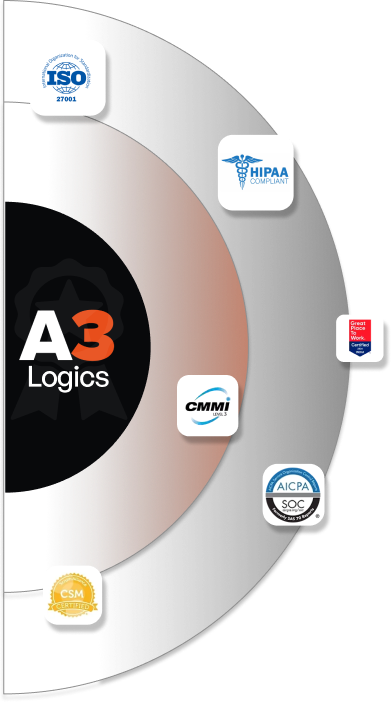Artificial intelligence is on the rise, but unlocking its full potential requires the right key. That key? Prompt engineering. This powerful technique crafts instructions that guide AI to generate exactly what you need, from creative content to groundbreaking research.
We’ve all seen the stats: OpenAI is paying $900k in salary, and the worldwide AI sector is expected to be valued at $1.6 trillion by 2030, and that doesn’t even account for the billions, if not trillions, of words that GPT-4, Claude, and other LLMs generate every day. Those at the forefront include, of course, data scientists, machine learning solutions specialists, and other elite practitioners.
But in 2022, everything changed since GPT-3 was widely used as soon as it was made available to the general public. The common person suddenly understood the value of prompts and the concept of GIGO, or garbage in, garbage out. The output will be completely controlled by the LLM if you write a careless prompt with no information. The model was initially straightforward, but users quickly discovered its full potential.
However, mastering writing-optimized prompts can be a challenge. Here’s where professional prompt engineering companies come in. In this blog, we’ll explore how partnering with these experts can revolutionize your AI journey. Furthermore, we’ll delve into the benefits, unveil success stories, and equip you with the knowledge to unlock the true power of AI through strategic prompt engineering.
Table of Contents
A Brief Introduction To Prompt Engineering
A Capgemini survey claims that generative artificial intelligence (AI) is currently the technology that is expanding the fastest, with almost 60% of top executives endorsing its use in routine company operations.
Applications of generative AI is meant to spur creativity, increase productivity, and quicken the expansion of businesses. But how will businesses obtain a competitive edge with the same technologies if the majority of them utilize generative AI? Here, AI prompt engineering solutions are essential.
The process of creating and improving prompts—questions or instructions—to elicit particular responses from AI models is known as prompt engineering. Overall, consider it the interface that connects machine output and human purpose. The correct cue can make the difference between a model correctly understanding your request and misinterpreting it in the wide field of artificial intelligence, where models are trained on massive datasets.
For example, you’ve engaged in a basic kind of prompt engineering if you’ve ever interacted with voice assistants like Alexa or Siri. The manner you ask for something might make a big difference in the outcome. For example, asking for “Play Beethoven’s Symphony” instead of “Some relaxing music“
Prompt Engineering’s Technical Side
Though it has its roots in language arts, prompt engineering is closely related to the intricate technical workings of artificial intelligence models. Here is a closer examination of the technical aspect:
-
Architectures for models:
Transformer designs serve as the foundation for large language models (LLMs), such as Google’s PaLM2 (Powering Bard) and GPT (Generative Pre-trained Transformer). Furthermore, with the use of self-attention prompt engineering techniques, these architectures enable models to comprehend the context and manage enormous volumes of data. Understanding these underlying systems is often necessary to create successful prompts.
-
Tokenization and training data:
Large-scale datasets are used to train LLMs, which then tokenize input data to make it easier to handle. The tokenization method (word-based, byte-pair, etc.) selected can affect how a model understands given input. For example, a word tokenized differently could produce different results.
-
Parameters of the model:
Millions, if not billions, of parameters, make up LLMs. The model’s response to a prompt is determined by these parameters, which are adjusted throughout the training process. Overall, having a better understanding of the connection between these parameters and model outcomes will help in creating prompts that work better. Connect with a large language model development company to know more.
-
Samples of Top-k and temperature:
Models employ methods such as temperature setting and top-k sampling during response generation to ascertain the outputs’ diversity and unpredictability. For example, answers could be more varied (but possibly less accurate) at a greater temperature. To maximize model outcomes, prompt engineering consulting services frequently modify these settings.
-
Grades and loss functions:
Deeper down, gradients and loss functions of the model affect how it behaves during prompt response. The learning process of the model is guided by these mathematical components. Although top prompt engineers usually don’t modify these directly, being aware of their effects might help you better understand how the model behaves.
Craft Powerful Prompts That Will Drive Success
Need For Prompt Engineering In Today’s Landscape
In today’s AI landscape, prompt engineering is crucial for several reasons:
Precision and Control:
AI models trained on vast amounts of data can generate a wide range of outputs. Prompt engineering allows you to focus that power, crafting instructions that steer the model toward the specific results you need. Furthermore, this eliminates irrelevant responses and ensures the AI delivers exactly what you’re looking for.
Unlocking Creativity:
While AI can analyze and process information effectively, it might not be inherently creative. Prompt engineering lets you tap into the model’s ability to generate novel ideas. Overall, by carefully crafting prompts, you can inspire the AI to write different creative content formats, translate with a specific tone, or even come up with new concepts.
Elevate Your Company’s Operations Beyond The Simple Use of AI
Why Hire a Professional Prompt Engineering Company?
“As a hiring manager, one of the most crucial decisions you’ll make is choosing the right talent to join your team.”
“The success of your organization depends on the skills, experience, and cultural fit of your employees.”
– Barry Johnston, hiring an expert on LinkedIn
The importance of Prompt Engineers in the dynamic field of artificial intelligence (AI) goes beyond the simple use of AI technologies by artificial intelligence solutions companies. Because of all the benefits they provide, their place in today’s enterprises is growing increasingly important. This article explores the many aspects of a company that hire prompt engineers and how important they are to strategic business success.
1. Transforming client support:
Customer service tools driven by AI are frequently the initial point of contact for customers. Furthermore, by creating effective, understandable, and sympathetic prompts, prompt engineers play a critical role in improving these encounters.
These exchanges enhance the general consumer experience and raise satisfaction levels. Reduced customer attrition and a lesser burden for human customer support professionals allow them to concentrate on handling more difficult inquiries.
2. Improving the education and training of your present staff:
The full potential of AI technology is contingent upon an organization’s comprehension of it. Here, the role of prompt engineers takes the role of teaching other staff members how to use AI tools efficiently. Furthermore, by promoting a culture of technological literacy, their workshops and training programs guarantee that the entire company gains from AI.
3. Filling up the Technical-Business:
More communication is needed between the technical and management teams in many companies. Here, prompt engineers take on the role of bridge builders. Hire AI developers with a special grasp of AI technology and the business environment that facilitates effective collaboration by converting business needs into technological specifications and vice versa. Furthermore, the results of this synergy are solutions that are implemented more successfully.
4. Increasing Prompt Productivity:
Engineers create internal usage prompts to aid in the streamlining of internal procedures. Routine tasks can be automated with the use of these prompts, saving manual work and removing the possibility of human error. Employees can dedicate more time to strategic tasks, which boosts overall productivity and produces better results and increased job satisfaction.
5. Advancing Innovation:
With their in-depth knowledge of artificial intelligence services and their potential, prompt engineers are always pushing the envelope. Their studies could result in novel applications of AI, giving the company a competitive edge and establishing new benchmarks for the sector.
6. Handling Risks:
Although revolutionary, conversational AI technology entails hazards of ethical problems, misuse, and accuracy. With their comprehensive knowledge of AI models, prompt engineers are skilled at identifying possible dangers and developing plans to reduce them, guaranteeing a morally and securely compliant AI environment inside the company.
7. Keeping Up with the Developments in AI:
There are always fresh advancements and discoveries in the quickly changing field of artificial intelligence. Furthermore, to maintain the company’s leadership in AI applications, a committed prompt engineer may assist the business in keeping abreast of new developments and integrating them into their current AI strategy.
8. Encouraging Economic Efficiency:
Long-term cost savings are greatly increased by having a prompt engineer, even though the initial investment in AI technology may appear high. They achieve this by increasing process efficiency, decreasing the demand for human labor, and automating a variety of jobs. Moreover, this effectiveness boosts the bottom line of the company and fosters sound financial management.
9. Making Data-Driven Decisions Possible:
Prompt engineers may leverage AI technology to evaluate large, complicated data sets and produce insights that can be put to use in the Big Data era. These insights help with well-informed decision-making and strategy formulation by offering a greater grasp of the market, customers, and internal processes.
10. Preserving Ethical AI Methods:
Prompt engineers ensure that AI tools are used to respect user privacy and promote justice in an era where ethics and data privacy are important. Furthermore, to uphold ethical AI practices and foster employee and customer trust, they strive to establish ethical norms for the use of AI within the company.
11. Exposing Novel Business Prospects:
A prompt engineer’s responsibilities also include opening up new growth opportunities in addition to streamlining current processes. Their ongoing use of AI innovation has the potential to uncover hitherto unexplored revenue streams by generating new business options.
12. Increasing Brand Recognition
The brand is reflected in AI’s interactions with consumers. To make sure that these exchanges are consistent with the tone and spirit of the business, Prompt engineers strive to do just that. Furthermore, in the end, they want to improve the reputation of generative AI development company by making sure AI contact is kind, precise, and enjoyable.
13. Improving Productivity of Employees:
Prompt engineering consulting services save employees time by automating repetitive operations, giving them more time to focus on intricate projects that call for creativity from humans. This enhances worker productivity generally and raises job satisfaction.
In conclusion, organizations may now use AI in previously unthinkable ways thanks to Prompt Engineers, who are ushering in a new era. They help companies do more, make the most of what they already have, discover new markets, and offer their customers outstanding value. Furthermore, their crucial place in today’s corporate environment is evidence of their significance and represents a paradigm change in how companies handle strategic planning and execution in the AI era.

How Do Top Prompt Engineering Companies Work?
Top AI companies providing high-quality AI solutions usually take an organized approach. Overall, an outline of how they normally operate is as follows:
1. Requirement analysis:
First, they ascertain the needs, goals, and difficulties associated with implementing AI for the client.
2. Planning and Strategy:
Taking into account the specifications, they create a thorough plan and strategy that delineates the project’s objectives, schedule, materials, and deliverables.
3. Research and Development:
Prominent engineering companies allocate resources towards investigating state-of-the-art artificial intelligence technologies and chatgpt prompt engineering solutions that may be implemented in the project.
4. Prototyping:
To verify concepts and show the viability of suggested solutions, they frequently build prototypes or proofs of concept.
5. Agile Development:
By applying agile approaches, they divide the project into feasible tasks and iterations, enabling adaptability and ongoing enhancement.
6. Collaboration:
To take advantage of different viewpoints and areas of knowledge, these organizations encourage collaboration amongst cross-functional teams, comprising engineers, data scientists, designers, and domain specialists.
7. Quality Assurance:
To guarantee that the AI in security solution satisfies the highest standards of performance, dependability, and security, rigorous testing and quality assurance procedures are put in place.
8. Deployment and Integration:
They guarantee the least amount of operational disturbance possible by seamlessly integrating the designed solution into the client’s current infrastructure.
9. Training and Support:
Top AI solution providers providing prompt engineering services give their clients access to thorough training and continuous assistance so they can use and maintain the AI solution efficiently.
10. Continuous Improvement:
They prioritize continuous improvement by actively seeking input, monitoring performance indicators, and refining the solution to meet changing requirements and challenges to prompt engineering.
To develop AI solutions that truly drive business value and transformation, leading prompt engineering organizations combine technical competence, creativity, collaboration, and a customer-centric approach.
Apply Prompt Engineering Techniques In Your Business Before Its Late
How To Choose The Right Prompt Engineering Company?
It takes strategy to choose the best prompt engineering business. Below is a more detailed analysis of the important things to think about:
Experience in the Industry:
- Domain Particularity: Seek out businesses that have completed projects in your particular sector. Furthermore, this guarantees that they are aware of the lingo, data formats, and specific goals that are specific to your industry.
- Case Studies and Portfolio: Ask to see case studies of initiatives that are comparable to yours. Moreover, these case studies should ideally describe the prompt engineering difficulties they tackled, the AI model they employed, and the success indicators they employed. Did they enhance chatbot interactions for customer service in the healthcare industry? Create copy for financial industry marketing that is more captivating. For projects in your field, measurable outcomes are extremely valuable measures of their efficacy.
- Industrial Honors: Academic honors or industrial accolades that the business has accumulated. Furthermore, this can give them more assurance that they comprehend the unique difficulties and opportunities your industry brings.
Team Expertise:
- Technical Skills: Accompany the group’s training in NLP and AI. Seek to combine academic understanding with real-world application. It can be advantageous to get certifications in related subjects such as machine learning or particular NLP solutions.
- Domain Knowledge: Ideally, some team members will have experience in your particular business. Furthermore, this makes it possible for them to understand the subtleties of your data and modify prompts to make use of that domain knowledge inside the AI model.
- Communication Skills: The group should be able to succinctly and clearly express difficult ideas. You must grasp their methodology and feel free to ask questions.
Process and Methodology:
- Collaborating with Clients: Find out about their usual procedure and how they include clients in the process. Overall, do they place greater emphasis on group brainstorming sessions or on taking a more autonomous approach that incorporates client feedback loops? Select an organization whose procedures correspond to your desired degree of engagement.
- Iterative Refinement: Iterative processes are frequently used in prompt engineering. Inquire about how they test and improve prompts. Do they gauge performance with pre-established metrics? How is the procedure updated to reflect client feedback?
- Ensuring that the organization has strong security processes in place is crucial if your project includes sensitive data protection and privacy.
Value and Pricing:
- Cost transparency: Get precise bids that clearly define the work’s parameters and cost schedule. Furthermore, avoid paying too much or using confusing pricing structures.
- Value Statement: Examine the value offered in addition to price. Do they provide continuing help and oversight after implementing the prompts? Can they provide proof of their previous projects’ returns on investment (ROI)?
Additional Considerations:
- Business Culture: Select an organization whose values coincide with your own. Do they respect creativity, cooperation, and honest dialogue? This may affect how the project is experienced overall.
- Scalability: Contemplate your long-term requirements. Furthermore, select a provider that can expand its services to meet the changing needs of your project if you plan to use AI more often.
- Customer References: Find references from former customers, especially those in the same field as you. This might offer insightful information about the company’s communication style, response to requests, and general level of client satisfaction.
Taking the Next Step:
Set up early meetings with the organizations you’ve shortlisted to talk about the specifics of your project and any obstacles. Moreover, this will enable you to evaluate how well they comprehend your requirements and evaluate the strategy they have suggested.
You can select a responsive engineering company that becomes a crucial component of your AI journey by carefully weighing these aspects and maintaining open lines of communication with possible partners.
Role Of Prompt Engineering In Revolutionizing AI In Different Industries
We will examine several well-known prompt engineering use cases in sectors including healthcare, finance, manufacturing, education, retail and e-commerce, and logistics and transportation, illuminating the revolutionary potential of AI in the modern world.
-
Prompt Engineering in Healthcare
By offering innovative solutions to a range of problems, including diagnostics, medical imaging, and mental health support, prompt engineering has completely transformed the healthcare sector.
Using medical chatbots to diagnose illnesses:
Artificial intelligence in healthcare has made it possible to create complex medical chatbots that can help patients with initial diagnoses. These chatbots use natural language processing services to comprehend medical histories and symptoms from patients, and then they can propose more testing or make possible diagnoses. Patients benefit from prompt advice and treatment in addition to time and resource savings.
Analyzing medical imaging data for improved diagnosis:
Medical imaging data, including X-rays, MRIs, and CT scans, have been analyzed in large part by AI-driven algorithms. Diagnoses made with more accuracy and efficiency are possible because these algorithms can identify trends, anomalies, and possible problems that human specialists would overlook.
These tools also offer further insights and recommendations, which can assist radiologists and other medical professionals in making more educated judgments.
AI-driven treatments to promote mental health:
Artificial intelligence (AI) has been used to develop prompt engineering to develop mental health support systems that provide individualized counseling and therapy. These systems can understand users’ needs, wants, and issues by evaluating user inputs such as text or speech.
They may then deliver personalized and empathetic solutions. The availability of mental health therapies at any time and location helps bridge the gap in mental health services and reduces the stigma associated with seeking help.
-
Prompt Engineering in Finance
As a result of prompt engineering’s incorporation into numerous procedures, the finance sector has undergone substantial change. Its influence on customer service, fraud detection and prevention, and financial data analysis has been astounding.
Automating investment decision-making processes using financial data analysis:
Prompt engineering has made it easier to create AI-driven applications that can automatically evaluate enormous volumes of financial data, such as economic indicators, market trends, and company performance.
Informed decision-making about investments and risk management are facilitated for investors and financial institutions as a result. These tools also can provide customized recommendations depending on an individual’s investing objectives and risk tolerance by utilizing AI-powered insights.
Improving fraud detection and prevention:
The finance sector is always fighting fraud, and fast engineering has emerged as a crucial weapon in this struggle. Furthermore, algorithms powered by AI are capable of quickly analyzing transactional data, spotting odd trends, and spotting possible fraud situations.
These systems may adjust and get better over time, becoming ever more proficient at identifying and stopping fraudulent activity, by fusing prompt engineering with machine learning techniques.
Using AI-driven chatbots to expedite customer service:
Artificial Intelligence (AI)-driven chatbots have revolutionized customer assistance in the finance sector. Overall, prompt engineering enables these chatbots to respond to a broad variety of consumer inquiries, from straightforward account inquiries to intricate financial product explanations.
-
Prompt engineering in Manufacturing
Prompt engineering has brought about significant gains in supply chain management, and product quality control. As a result, the manufacturing sector has advanced significantly.
Process optimization using AI-driven insights in production:
To find bottlenecks, inefficiencies, and possible areas for improvement in production data, companies can employ AI-powered solutions.
These systems facilitate operational efficiency, cut down on waste, and boost output by offering real-time information and suggestions. By spotting possible equipment faults before they happen and cutting down on downtime and repair expenses, they can also help with predictive maintenance.
Predictive analytics frameworks controlled by artificial intelligence can handle colossal volumes of store network data, including demand gauges, stock levels, and provider execution, to deliver insights that guide the following game plan.
These advancements may at last prompt a more useful and practical production network by helping organizations upgrade stock levels, cutting lead times, and fortifying provider connections.
Further developing item quality control utilizing machine learning algorithms:
Guaranteeing high item quality is fundamental for keeping up with consumer loyalty and brand notoriety. Prompt engineering, joined with machine learning algorithms, has permitted makers to foster computerized quality control frameworks that can rapidly recognize deformities or irregularities in items.
These frameworks can examine data from visual examinations, sensor readings, and different sources to identify issues that might be missed by human monitors, prompting a more steady and solid item quality.
-
Prompt Engineering in Education
Prompt engineering has brought about a major shift in the education sector, resulting in the creation of intelligent tutoring systems, collaborative learning, and tailored learning experiences.
AI-powered educational platforms that provide individualized learning experiences have been made possible due to prompt engineering.
These platforms are capable of producing customized recommendations for learning materials, exercises, and study schedules by evaluating individual student data, including learning preferences, advancement, and problem areas. Better academic results are eventually the result of this individualized strategy, which enables pupils to learn more efficiently and at their own speed.
AI-generated content for collaborative learning facilitation:
One of the most effective teaching strategies is collaborative learning, which encourages students to cooperate to solve issues and share knowledge.
It is now feasible to create AI-driven technologies that can provide content to assist and improve cooperative learning activities. To create a dynamic and engaging learning environment, these technologies can provide discussion starters, problem-solving scenarios, or even give students real-time feedback while they collaborate.
-
Prompt Engineering in Retail and E-commerce
The retail and e-commerce industries have been greatly impacted by prompt engineering, which has resulted in improved user experiences, automated customer care, and simplified inventory management.
Further developing the user experience utilizing AI-powered product recommendations:
The development of AI-powered recommendation systems that examine user preferences, perusing history, and purchasing trends to provide tailored product recommendations has been made possible through prompt engineering.
Retailers benefit from greater sales and customers have a more enjoyable shopping experience as a consequence of these recommendations, which help customers in finding new products that match their requirements and interests.
Inventory management made easier with predictive analytics:
Prompt engineering has made inventory management easier, yet it can in any case be challenging for retailers to handle. Predictive analytics systems powered by AI can precisely estimate product demand by examining past sales data, present trends, and more variables.
Eventually, this results in cost reserve funds and increased customer fulfillment for merchants as they can optimize inventory levels and reduce stockouts and excess inventory.
Mechanizing customer service with intelligent chatbots:
Prompt engineering has also led to the creation of AI-powered chatbots that can handle a varied range of customer inquiries and issues. These intelligent chatbots can provide fast and accurate reverts to normal questions, help with order following, and even process returns or refunds.
Via robotizing customer service tasks, retailers can improve customer fulfillment while reducing the responsibility for human customer service representatives, permitting them to zero in on more complex or sensitive issues.
-
Prompt Engineering in Transportation and Logistics
Prompt engineering altogether affects the transportation and strategies sectors, resulting in optimized directing and scheduling, enhanced vehicle maintenance, and streamlined traffic management.
Streamlining directing and scheduling with AI-driven predictions:
Efficient steering and scheduling are basic for transportation and operations companies to minimize costs and maximize customer fulfillment.
Prompt engineering has enabled the development of AI-driven instruments that can analyze factors, for example, traffic patterns, weather circumstances, and customer delivery preferences to generate optimized steering and scheduling plans.
These instruments lead to more efficient operations, reduced fuel utilization, and improved on-time delivery performance.
Streamlining traffic management with real-time data investigation:
Traffic congestion and inefficiencies can have a huge effect on transportation and logistics operations. Furthermore, Prompt engineering has made it possible to develop AI-driven traffic management systems that can analyze real-time data from sensors, cameras, and other sources to optimize traffic streams and reduce congestion.
These systems can adjust to evolving conditions, for example, accidents or street closures, and provide alternative directing suggestions to drivers, helping to ensure smooth and efficient transportation of merchandise and people.
Many industries, including healthcare, banking, manufacturing, education, retail and e-commerce, transportation, and operations, have shown great promise for prompt engineering. Prompt engineering has aided in the resolution of difficult problems, process optimization, and improvement of client experiences by enabling the creation of AI-driven arrangements.
Improved diagnostics, tailored learning experiences, optimized supply chains, and more effective traffic management are just a few of the prompt engineering benefits that have come from its uses.

Future Of Prompt Engineering
So what’s in store for the field of artificial intelligence in 2025, especially for prompt engineers? I believe that their particular job will progressively lose significance. By 2025 and beyond, the models will probably be a lot more sensitive and intuitive than those of the past. This does make it more unclear what kinds of responsibilities will be affected by this ongoing model enhancement (or deterioration, if that’s still conceivable).
We will not only be the users’ passive information consumers; we will also actively participate in the AI’s learning process. The AI’s knowledge base and response system will continuously evolve as a result of our interactions, questions, and doubts.
For better or worse, I think we’ve reached the point of no return, and the landfill will only get larger in the future of prompt engineering. As we approach 2025, the potential actuality of our work might prompt us to take account of our accomplishments and the bubble of ChatGPT and other language models.
Parting Thoughts
In summary, businesses looking to effectively utilize artificial intelligence solutions must engage the services of a seasoned prompt engineering company to transform AI. These businesses like A3Logics are equipped with the knowledge, skills, and assets required to successfully negotiate the challenges involved in developing and implementing AI.
Businesses can expedite innovation, simplify AI initiatives, and accomplish game-changing outcomes by collaborating with such companies. In today’s quickly changing technical landscape, investing in the proper engineering partner can greatly increase an organization’s competitive edge.
Let our solutions create history! Join hands with one of the top-rated IT solution providers in the globe.
Get Started With Prompt Engineering and Supercharge Your AI Efforts
FAQ
What things should I look for in a competent prompt engineering business for the AI revolution?
A company’s reputation in the market, past project achievements, scalability of solutions, and capacity to customize solutions to your unique requirements are all important considerations when selecting a prompt engineering company.
How can a seasoned fast engineering company assist my organization in bringing AI to the next level?
These businesses offer full-cycle AI development services, encompassing AI system research, development, implementation, and maintenance. They ensure the successful implementation of AI solutions customized to your business objectives by bringing specific skills and knowledge to the table.
What advantages do prompt engineering companies offer while collaborating on AI projects?
Associating with a company providing prompt engineering services presents several advantages, including shortened project schedules, lower development expenses, entry to state-of-the-art AI technologies, lower technical risk, and the capacity to utilize the experience of seasoned experts.
What steps should I take to make sure that my AI project team works well together with a fast-acting engineering company?
It takes clear communication, goal alignment, frequent progress reports, and active involvement in the development process to work effectively with the engineering company of your choice. A collaborative relationship is the foundation for effective project outcomes because it promotes openness, mutual understanding, and trust.
Which kinds of AI projects do professional prompt engineering companies take on?
Numerous AI projects, such as computer vision, machine learning services, predictive analytics, robotic process automation, natural language processing, and AI-powered software development for a range of sectors and applications, can be taken on by a trustworthy prompt engineering company.
Is using a prompt, experienced engineering company more affordable when implementing AI projects?
Employing a reputable company providing prompt engineering for AI may seem like a big initial commitment, but in the long term, it’s usually rather economical. In the end, these companies provide a significant return on investment by delivering high-quality solutions that produce noticeable commercial benefits, mitigating technical risks, and offering efficient development procedures.






